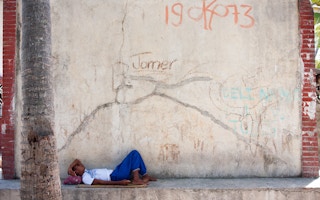Tomorrow’s metropolises will feel the heat: by the close of the century, assuming that nations act on vows to drastically reduce fossil fuel use, hotter cities − on average almost 2°C warmer than today − will be home to billions of people.
And if humans go on − as is the case now − tipping ever-greater levels of greenhouse gases into the atmosphere, then Paris and Philadelphia, Shanghai and São Paulo, Lagos and London, Beijing and Baghdad could see an average rise of 4.4°C.
The world’s cities are also likely to become less humid as the thermometer goes up, say US scientists who have harnessed machine-learning to statistical data to find a new way of checking the future of the planet’s cities this century.
Such research is literally vital, and vital to most of humankind. Right now, cities − concentrations of people, asphalt, concrete, brick, glass and steel − cover just 3 per cent of the globe’s terrestrial surface, but shelter more than 50 per cent of the world’s people. By 2050, the present megacities and many new ones will be home to more than 70 per cent of humanity.
And they will become hot properties in every sense, simply because they are cities.
“
Cities are full of surfaces made from concrete and asphalt and retain more heat than natural surfaces and perturb other local-scale biophysical processes.
Lei Zhao, engineer, University of Urbana-Champaign
Global picture
“Cities are full of surfaces made from concrete and asphalt and retain more heat than natural surfaces and perturb other local-scale biophysical processes,” said Lei Zhao, an engineer at the University of Urbana-Champaign in the US.
“Incorporating these types of small-scale variables into climate modelling is crucial for understanding future urban climate. However, finding a way to include them in global-scale models poses major resolution, scale and computational challenges.”
Dr Zhao and his colleagues report in the journal Nature Climate Change that they combined a range of climate simulations with data-driven statistical models to bring a picture − on a global scale − of the overall average impact of climate change on the urban world.
The researchers stress that their results deliver only the big picture, are inevitably subject to uncertainties, and deliver average temperatures rather than extremes.
But they offer a clear warning that, by 2100, the mid-to-northern US, southern Canada, Europe, the Middle East, northern Central Asia and north-western China will “exhibit the most pronounced urban warming during both daytime and night-time. Inland South America also shows strong night-time warming.”
High-latitude cities in the northern hemisphere will, they find, warm considerably during the winter months: Anchorage in Alaska is already experiencing climate change at twice the rate of cities at mid-latitudes.
They also find a near-universal decrease in relative humidity in cities during the summer months by the end of the century: in some cases, this will inevitably be translated into heat stress, water scarcity and energy uncertainty.
This broad-brush, big-picture forecast for things to come has already been prefigured in earlier research into the potential consequences of heat extremes.
Average increases of 1.9°C or 4.4°C sound alarming enough, but these mean, median or average figures mask a range of extremes likely to impose costs on urban economies, human health and even mortality.
Less stress
Heat extremes are on the way. Heat can kill. High temperatures combined with high humidity could make life without air-conditioning precarious. But air-conditioning heightens energy demand and at the same time makes the streets even hotter.
And researchers have already identified the most dangerous landscapes: the megacities, especially those in parts of China and south Asia. By 2070, as many as three billion people could at some time of the year face heat levels now considered extreme, and for now a challenge to only a few.
The helpful news from the study is that, as humidity levels fall in the cities, this will make surface evaporation more efficient as a cooling mechanism. If so, then what some researchers politely call “green infrastructure” could offer real help: city parks and green spaces could become urban forests. Trees in streets and gardens could help cool the ambient air.
“Our findings highlight the critical need for global projections of local urban climates for climate-sensitive urban areas,” Dr Zhao said. “This could give city planners the support they need to encourage solutions such as green infrastructure intervention to reduce urban heat stress on large scales.”
This story was published with permission from Climate News Network.










